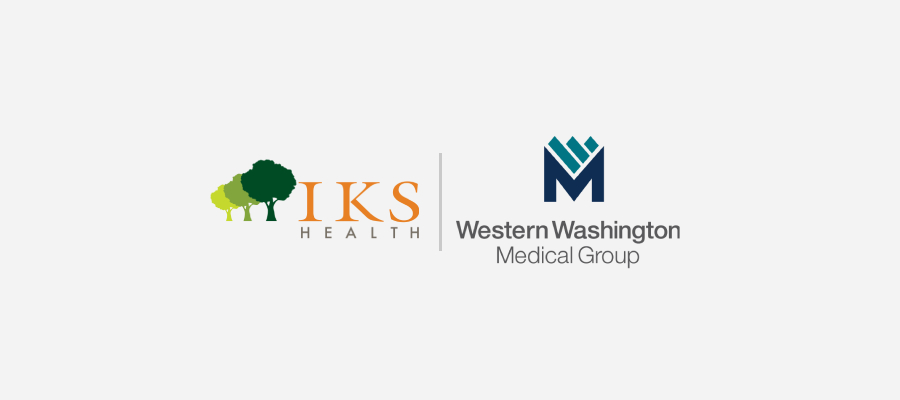Transforming Clinical Documentation with Ambient AI-Powered Scribing

The importance of meticulous documentation has grown as patient volumes increase, highlighting its value in providing comprehensive care, but clinical documentation’s impact extends beyond the note itself. Accurate documentation lays a strong foundation for compliant diagnoses, effective treatment, care coordination, and the right coding for reimbursements.
Impact of Clinical Documentation on Care Delivery
When clinicians have access to well-documented patient data from multiple sources, they can make informed decisions quickly and accurately. Comprehensive notes facilitate seamless communication among care teams, ultimately boosting the efficiency, effectiveness, and financial stability of healthcare organizations.
1. Quality of care
Errors or omissions in documentation can lead to misdiagnosis or ineffective treatments, which jeopardize patient safety. Clear and comprehensive records, however, help clinicians understand a patient’s full health history, allowing for more accurate diagnoses and tailored treatment plans. This ensures continuity of care, improves coordination among caregivers, and identifies care gaps to facilitate timely preventive care. Data can also be shared with patients, via patient portals, to foster transparency and encourage active engagement in their care journey. When patients feel their concerns are thoroughly documented and understood, it strengthens the clinician-patient relationship and they are more likely to adhere to treatment plans, leading to better long-term health outcomes.
2. Investing in Better Care
Accurate and efficient clinical documentation is a critical driver of an organization’s ability to reinvest in patient care. When documentation is thorough and precise, it minimizes claim denials, accelerates reimbursements, and ensures that healthcare organizations receive appropriate compensation. This financial stability enables organizations to allocate more resources toward technology, personnel needed to enhance care delivery, and expanding patient-centered programs. By reducing administrative inefficiencies and optimizing revenue capture, strong clinical documentation enables clinicians to spend more time with patients, enhances care quality, improves patient experiences, and ensures long-term sustainability.
3. Population Health Improvement
Comprehensive clinical data in the electronic health records (EHRs) help shape public health policies by providing insights into community health trends. Clinicians can use this data to customize interventions for specific subpopulations based on their unique needs and risk factors, optimizing care and resource allocation for these groups. Additionally, accurate clinical documentation supports the creation of patient registries, enabling health agencies to manage populations effectively, track diseases, and improve overall health outcomes.
4. Compliance and Legal Regulations
Accurate clinical documentation is key to maintaining compliance with healthcare regulations and avoiding legal issues. By adhering to standards and regulations, like HIPAA and the Affordable Care Act, healthcare organizations ensure patient privacy while avoiding financial penalties that put the organization’s reputation and ability to deliver quality care at risk. Maintaining clinical documentation integrity (CDI) supports effective care coordination and organizational accountability.
What Stands in the Way of High-Quality Clinical Documentation?
However, ensuring high-quality clinical documentation is not without its challenges and requires active participation from the entire healthcare team. Much of this clinical data is unstructured, coming from patient notes that need to accurately capture the complexity and acuity of patient care. These notes directly impact coding and billing and are crucial to secure appropriate reimbursement. Clinicians are expected to produce detailed, accurate documentation that meets all these standards while battling against:
- Time Constraints and Workload: Clinicians face growing pressures to balance patient care with extensive documentation requirements. Patients with complex chronic conditions or diverse needs require detailed records which demand substantial time and attention. With rising patient volumes, clinicians are often short on time, leading to rushed documentation. This can result in inaccurate or incomplete records, affecting the quality of care, and ultimately, patient outcomes.
- EHR Interoperability and Data Sharing: Whole-person care often involves collaboration among multiple providers, making it essential for clinical documentation to be integrated and easily shareable. Unfortunately, the industry struggles with interoperability across distinct systems, leaving patient data fragmented and difficult to access, complicating the process. This lack of seamless data sharing, especially during referrals, can disrupt timely decision-making and even contribute to medical errors.
- Training and Adaptability: There is sometimes a gap between clinicians’ clinical expertise and their familiarity with documentation standards. While clinicians possess significant medical knowledge, they may not always have the specialized training required to document care in a way that aligns with coding guidelines. Inconsistent or unclear documentation can lead to coding errors, which may result in claim denials, reduced reimbursements, and potential impacts on patient care. Providing proper training in Clinical Documentation Improvement (CDI) is essential to ensure that notes are both clinically accurate and appropriately coded.
The Shift from Traditional Scribing to Ambient AI
Clinicians are struggling with the burden of clinical documentation — either spending excessive time on notes themselves or relying on live scribes, which can be costly, inconsistent, and introduce privacy concerns. Ambient AI scribing is emerging as a game-changer, passively listening to patient-clinician interactions and automatically generating accurate clinical notes.
This technology reduces administrative strain, allowing clinicians to focus on patient care. The American Medical Association also reports that AI-driven scribing enhances clinician-patient interactions by minimizing administrative distractions and improving documentation accuracy.
As AI continues to evolve, ambient scribing is poised to replace traditional methods, offering a more efficient, accurate, and scalable solution for medical documentation.
Transform Care with Ambient AI Scribing Solutions
Producing the high-quality documentation that captures the patient’s journey across the care continuum has become a significant burden for healthcare professionals. IKS Health Ambient AI Scribing technology streamlines this process by allowing clinicians to focus on patient care instead of manual note-taking. By offering the speed of generative AI with the option to layer in the quality of human validation, this technology not only reduces documentation time but also improves the accuracy and richness of patient records.
The IKS Health ScribbleTM Suite adapts to clinicians’ existing practices, boosting efficiency and enabling them to see more patients. By reducing administrative tasks, it helps combat burnout and improve job satisfaction, while enhancing patient satisfaction through more personalized care.
Ambient scribing solutions, like Scribble Now, Scribble Swift, and Scribble Pro capture essential clinical details during patient encounters, and in some cases trained scribes enhance and validate the note to ensure compliance and accuracy. IKS Scribble Pro enhances the note using an IKS Health clinician scribe to reconcile medications, problem lists, orders, and other clinical data to eliminate inaccuracies. Scribble Pro also includes E&M coding, ensuring timely and compliant documentation.
Discover more about our clinical documentation solutions and harness the power of virtual scribe and ambient speech technology to improve efficiency, accuracy, and clinical support. Help clinicians be more productive by supporting a healthy work-life balance. This leads to safer patient care and ensures correct reimbursements for your organization.


